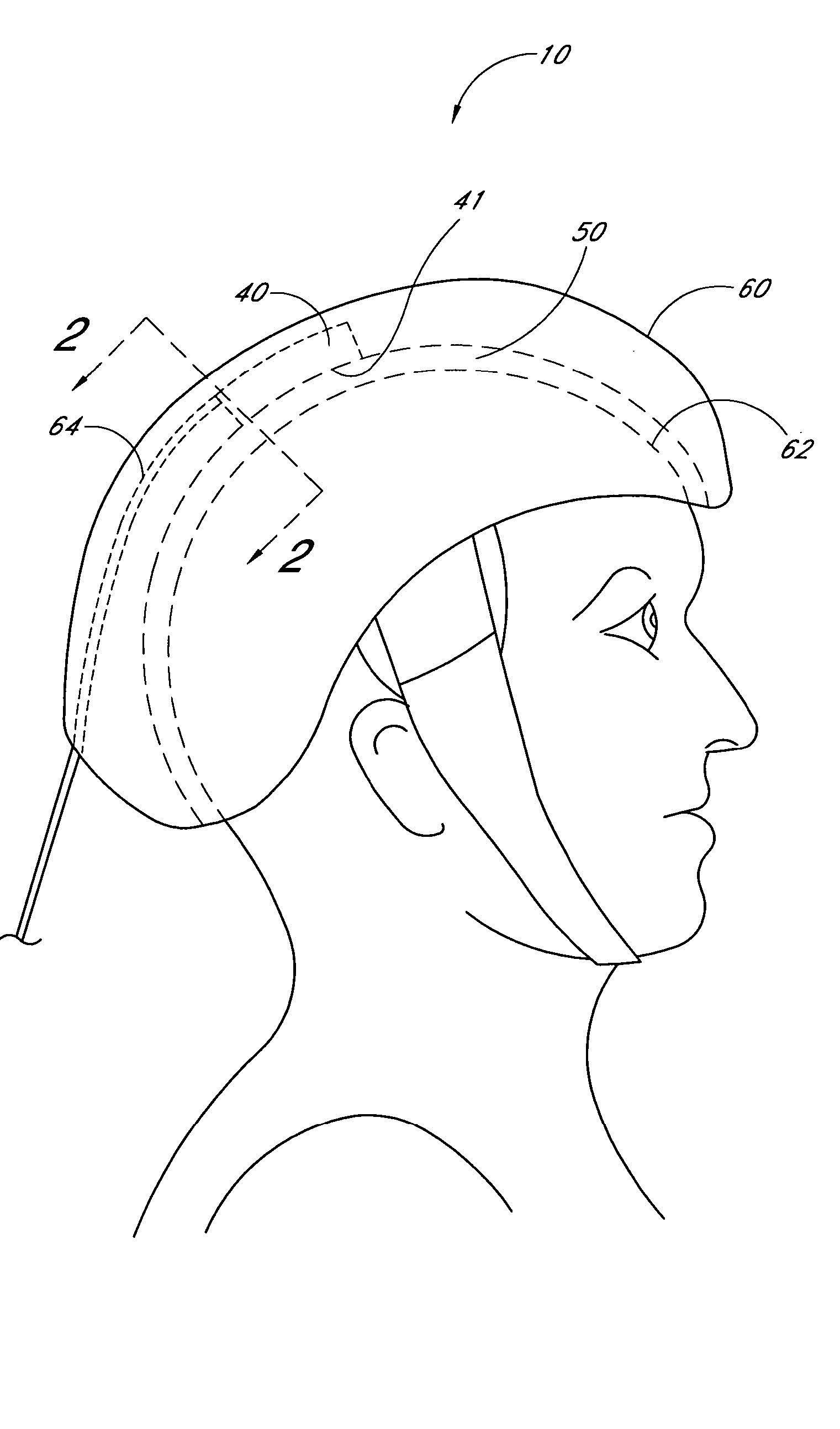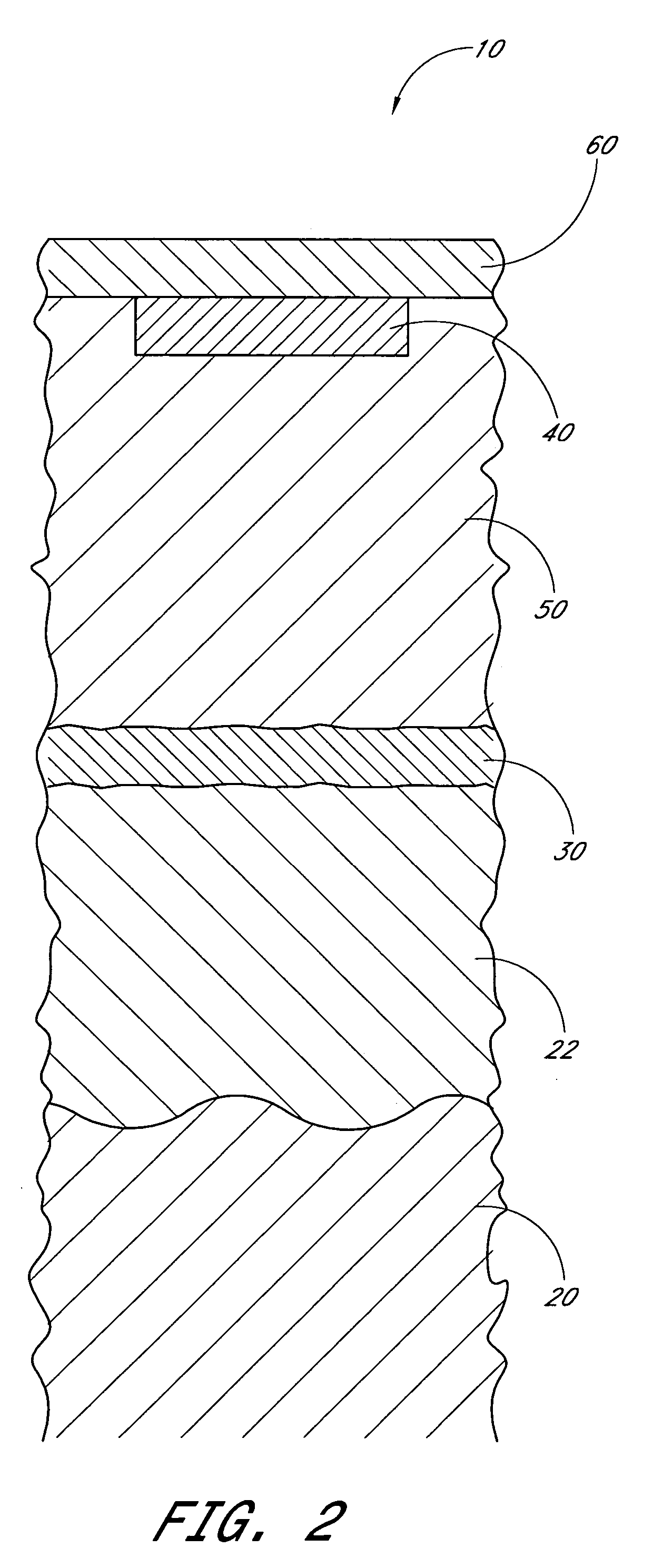Device and method for providing phototheraphy to the brain
a brain and apparatus technology, applied in the field of phototherapy, can solve the problems of loss of brain function in the affected brain region, concomitant loss of bodily function, human suffering
- Summary
- Abstract
- Description
- Claims
- Application Information
AI Technical Summary
Benefits of technology
Problems solved by technology
Method used
Image
Examples
Embodiment Construction
[0119] An in vitro experiment was done to demonstrate one effect of phototherapy on neurons, namely the effect on ATP production. Normal Human Neural Progenitor (NHNP) cells were obtained cryopreserved through Clonetics of Baltimore, Md., catalog #CC-2599. The NHNP cells were thawed and cultured on polyethyleneimine (PEI) with reagents provided with the cells, following the manufacturers' instructions. The cells were plated into 96 well plates (black plastic with clear bottoms, Becton Dickinson of Franklin Lakes, N.J.) as spheroids and allowed to differentiate into mature neurons over a period of two weeks.
[0120] A Photo Dosing Assembly (PDA) was used to provide precisely metered doses of laser light to the NHNP cells in the 96 well plates. The PDA included a Nikon Diaphot inverted microscope (Nikon of Melville, N.Y.) with a LUDL motorized x, y, z stage (Ludl Electronic Products of Hawthorne, N.Y.). An 808 nanometer laser was routed into the rear epi-fluorescent port on the microsco...
PUM
 Login to View More
Login to View More Abstract
Description
Claims
Application Information
 Login to View More
Login to View More - R&D
- Intellectual Property
- Life Sciences
- Materials
- Tech Scout
- Unparalleled Data Quality
- Higher Quality Content
- 60% Fewer Hallucinations
Browse by: Latest US Patents, China's latest patents, Technical Efficacy Thesaurus, Application Domain, Technology Topic, Popular Technical Reports.
© 2025 PatSnap. All rights reserved.Legal|Privacy policy|Modern Slavery Act Transparency Statement|Sitemap|About US| Contact US: help@patsnap.com



